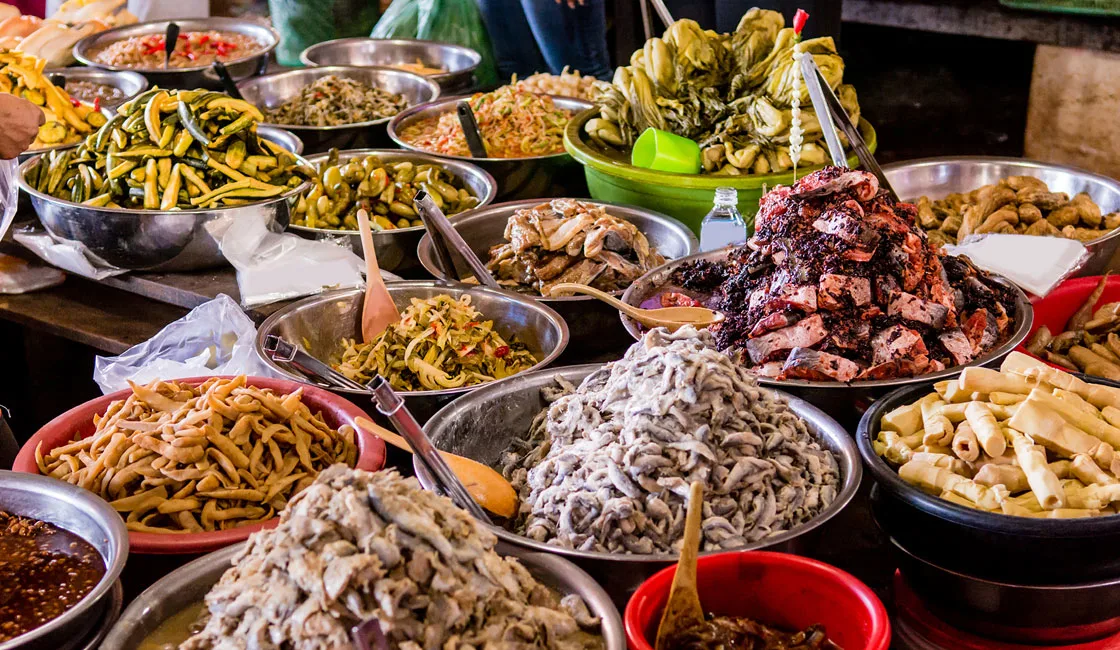
Tucked away in Southeast Asia, Cambodia’s culinary scene is a hidden treasure. Unlike the internationally familiar Thai or Vietnamese cuisines, Cambodian food – deeply rooted in Khmer traditions and shaped by Chinese and French influences – is still a delightful surprise to many travelers.
If you’re planning to join a Cambodia tour package or explore the country as part of an Indochina holiday, you’ll be introduced to a cuisine that’s rich in flavor, fresh in ingredients, and always full of character.
🌿 The Essence of Khmer Cuisine
Cambodian food shares much in common with neighboring countries in terms of ingredients – fresh herbs like lemongrass, galangal, coriander, and garlic are staples – but the flavors tend to be milder, with less heat than Thai food and more subtle than Vietnamese. It’s all about balance.
Rice is the foundation of nearly every meal, served with a variety of stir-fried dishes, soups, curries, or grilled meats. For many, the best introduction to Khmer food happens not in fine dining restaurants but on the buzzing streets of Phnom Penh or Siem Reap.
🍛 What to Expect on the Menu
- Breakfast: Forget toast and cereal. A traditional Cambodian breakfast might include fragrant rice or noodles with pork or chicken, a bowl of clear broth, and tangy pickled vegetables.
- Snacks & Street Food: Street vendors sell everything from crispy banh chao (stuffed rice pancakes) and nom pang (baguettes with local fillings) to the adventurous balut (duck embryo eggs). Sweet treats include fried bananas and sticky rice cakes.
- Main Meals: Cambodian stir-fries and soups often include ginger, onions, garlic, tomatoes, and local spices. Amok, a mild coconut fish curry steamed in banana leaves, is a national favorite. Samlor korko, a hearty vegetable stew, and various noodle soups are also widely loved.
- Meat & Fish: Pork is the most accessible meat, while beef is less common due to its cost and cultural reasons. Expect your chicken or duck to be chopped whole, bones and all. Fish, particularly freshwater varieties from the Mekong and Tonlé Sap, is omnipresent – grilled, dried, or in stews.
- Vegetables & Pickles: With meat being expensive, vegetables play a big role. Pickled veggies are commonly served as sides to enhance flavor and balance textures.
- Desserts: Rice-based desserts with coconut milk, sugar syrup, and tropical fruits are common. Be brave and try durian – its pungent smell masks a surprisingly delicious custard-like texture.
🍹 What Cambodians Drink
- Tea is the go-to drink for locals, especially green tea – often served free in restaurants.
- Coffee, mostly imported from Laos or Vietnam, is less common but gaining popularity.
- Fruit juices from stalls are refreshing, especially in the evenings.
- Beer is widely available, with Angkor Beer being the national favorite. Locally brewed rice wine and sugar palm beer offer a taste of traditional Khmer drinking culture.
🥢 Eating Like a Local
One of the joys of any Cambodia family tour or customized Indochina itinerary is the chance to eat like the locals do. Whether it’s sitting at a street stall for a bowl of noodle soup or sharing a home-cooked meal in a rural village, food brings people together here.
Don’t hesitate to ask your Cambodia travel agency to include culinary experiences in your itinerary — from market tours to cooking classes or simply eating street food with a guide. It’s not just about eating; it’s about discovering Cambodia one delicious bite at a time.



